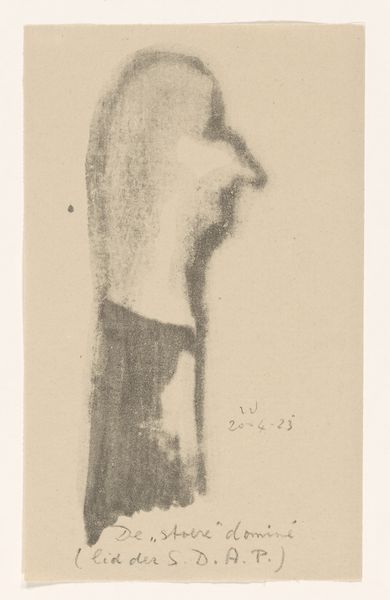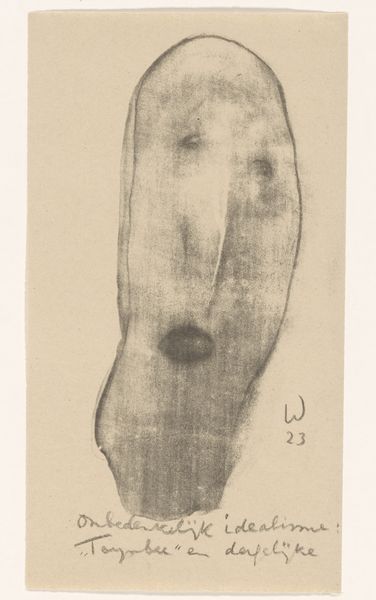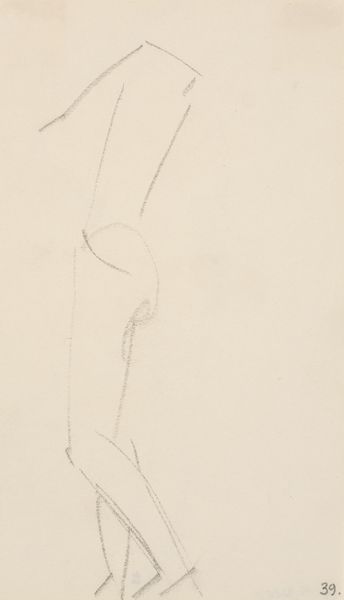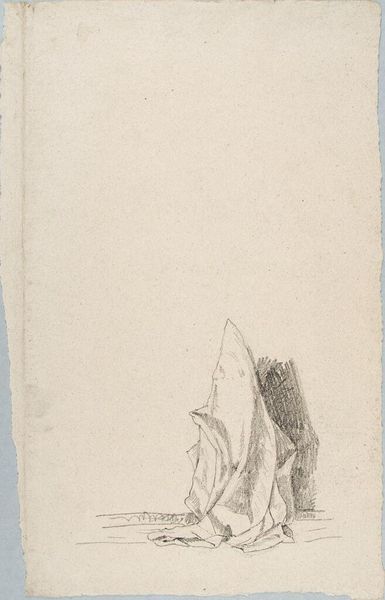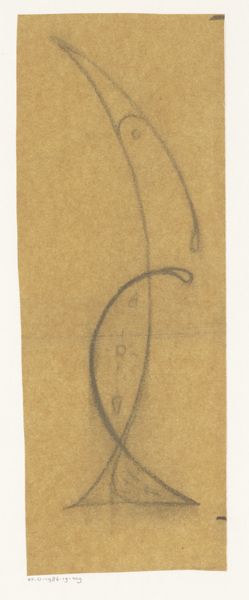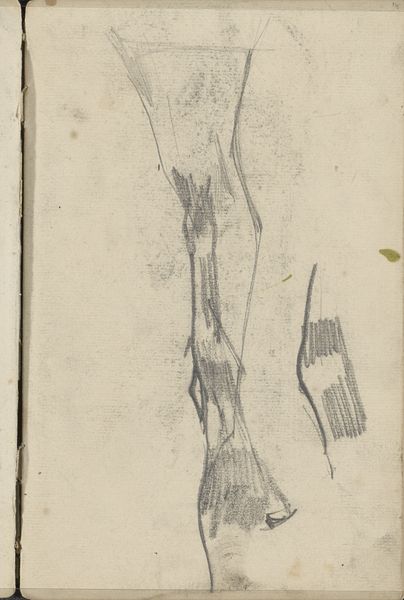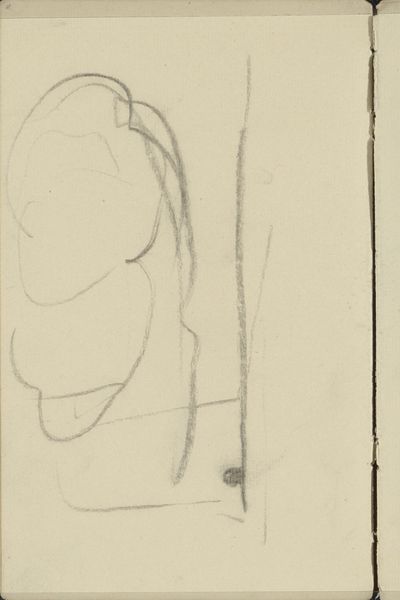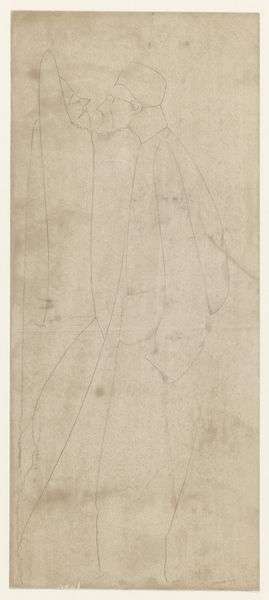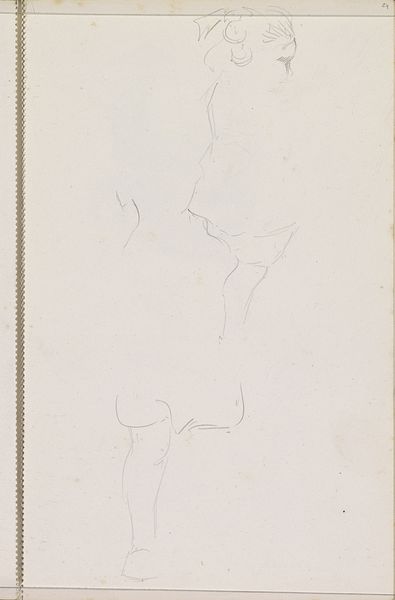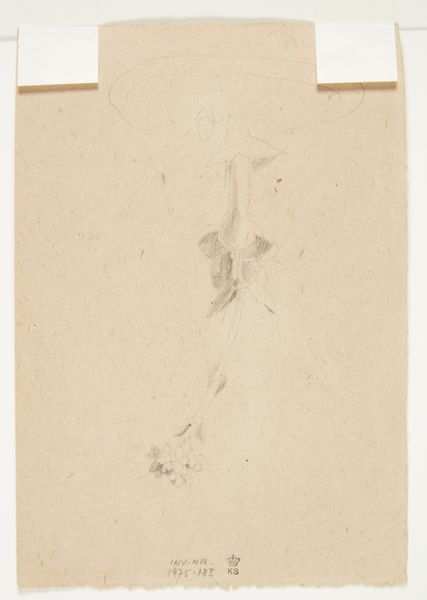
drawing, paper, ink
#
portrait
#
drawing
#
figuration
#
paper
#
ink
#
expressionism
#
line
Dimensions: height 163 mm, width 106 mm
Copyright: Rijks Museum: Open Domain
Curator: I’m drawn to the economy of line in Erich Wichmann’s ink drawing, "Solist," created in 1923. There’s a ghostly, almost fleeting quality to it. Editor: Ghostly is a good word. It feels unfinished, raw…like a single moment of performance captured just before it vanishes. But what about the title? "Solist." Who are we seeing here? What’s the context of this figure? Curator: The power here, I think, is in the suggestion rather than concrete depiction. Note how the minimal use of ink— a dark stroke indicating the hair or a cap— evokes a certain… austerity. It’s like a half-formed memory of a performer, embodying solitude and concentration, archetypes of a struggling artist perhaps. The wisp of the face feels secondary, less defined. Editor: I agree the feeling of solitude is palpable. But an interesting note for me is how the relative boldness of the cap focuses us not on identity, necessarily, but maybe class, performance, a role assumed rather than innate. Who gets to perform, and at what cost? The lack of detail invites these questions, these spaces, of access and subjectivity. This could be an early critique of artifice. Curator: Or perhaps it is revealing something more internal? Wichmann’s work often hints at underlying emotional states. Consider the post-war climate in Germany; Expressionism was flourishing, offering artists a visual language for the anxieties and disillusionment of the time. “Solist” might not be about social roles but personal experiences. It could embody an isolated figure lost in their interior world, performing only for themself. Editor: I see your point about the broader Expressionist context. And maybe the personal is political here too. I keep coming back to that downward-trending line, which I find almost mournful. In 1923, Weimar Germany faced massive social and economic challenges, something certainly weighing heavily on a working artist such as Wichmann. This could represent that heavy, inescapable grief. Curator: Grief definitely permeates it. Whether internal or external in origin, the symbols present hint at a heavy psychological toll. It resonates through history as such, still. Editor: Absolutely. It’s a work that challenges us to see beyond the surface. Thank you.
Comments
No comments
Be the first to comment and join the conversation on the ultimate creative platform.

